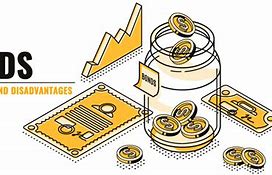Bonds Investing: A Safe and Stable Option


Oke, ini dia paragraf pembuka artikel SEO Friendly tentang ‘Bonds Investing: A Safe and Stable Option’ dengan bahasa inggris dan jumlah kata minimal 300 kata.
Bonds investing: A safe & stable option
Are you looking for a way to diversify your portfolio & potentially earn a steady income? Look no further than bonds! Bonds are debt securities that represent loans made by investors to borrowers, such as corporations or governments. When you buy a bond, you are essentially lending money to the borrower & in return, you receive regular interest payments & the principal amount back at maturity.
Bonds are considered a safer investment option than stocks because they carry less risk. While the value of stocks can fluctuate widely based on market conditions, bonds are generally more stable. This stability comes from the fact that bondholders have a fixed claim on the issuer’s assets & income, which means they are less susceptible to market volatility. Bonds can be a reliable source of income & provide stability for your portfolio, especially during periods of market uncertainty.
But don’t get fooled into thinking that bonds are boring & predictable. With a wide range of bond types available, there are various opportunities to explore. You can find bonds with different maturity dates, interest rates, & credit ratings, allowing you to tailor your investments to your individual risk tolerance & financial goals.
For those seeking a reliable & predictable source of income, investing in bonds may be the answer you’ve been looking for. In the next section, we’ll dive deeper into the various types of bonds & discuss the advantages & disadvantages of each option, helping you understand if bond investing is the right strategy for you. So, sit back, relax, & let’s explore the world of bond investing!
Bonds Investing: A Safe and Stable Option
In the realm of finance, investors are always seeking strategies to achieve their financial goals. While stocks offer the potential for significant growth, they come with inherent risk. For those seeking a more stable and predictable path to financial success, Bonds Investing presents a compelling alternative.
What are Bonds?
Bonds are essentially loans that you provide to a borrower, whether it’s a government, a corporation, or a municipality. In return for lending your money, the borrower promises to pay you back the principal amount (the original loan amount) along with regular interest payments, known as coupon payments.
Understanding the Basics of Bonds: What are they? How do they work?
Imagine you lend $1,000 to a company. The company promises to repay you the $1,000 at a specific date in the future, known as the maturity date, and also pay you regular interest payments, say $50 every year, until that date. This is essentially how bonds work.
Why Bonds are Considered a Safe Investment: Exploring the reasons behind their stability.
Bonds are often considered safe investments due to their relatively low risk compared to stocks. Here’s why:
- Fixed Interest Payments: Unlike stocks, where dividends can fluctuate, bonds offer fixed interest payments that are predetermined at the time of issuance. This provides predictable income for investors.
- Priority in Repayment: In case of a company’s bankruptcy, bondholders are generally paid before stockholders. This prioritizes the repayment of your investment.
- Government-Backed Security: Government bonds, issued by countries or municipalities, are backed by the full faith and credit of the issuing entity, making them a very safe investment option.
Types of Bonds: A breakdown of the different types of bonds available, like government bonds, corporate bonds, and municipal bonds.
- Government Bonds: These bonds are issued by federal, state, or local governments. They are considered very safe due to the backing of the government’s taxing power.
- Corporate Bonds: Issued by companies to raise capital for various projects, these bonds carry a higher risk than government bonds because they are dependent on the financial health of the company.
- Municipal Bonds: Issued by cities, counties, or other local governments, these bonds are typically used to finance infrastructure projects. They offer tax-exempt interest income, making them attractive to investors in higher tax brackets.
Bond Terminology Explained: Key concepts like coupon rate, maturity date, yield, and credit rating, explained in plain language.
- Coupon Rate: This is the annual interest rate that a bond pays.
- Maturity Date: This is the date when the bond issuer repays the principal amount of the bond.
- Yield: This is the annual return that an investor can expect to receive from a bond, taking into account both the coupon rate and the bond’s current market price.
- Credit Rating: This is a rating assigned by credit rating agencies that reflects the issuer’s ability to repay its debts. A higher credit rating generally indicates a lower risk of default.
The Advantages of Investing in Bonds
- Stable Returns: Bonds offer consistent income, making them an attractive option for investors seeking predictable returns. This stability can be particularly beneficial for long-term financial goals.
- Lower Risk than Stocks: Bonds are generally considered less risky than stocks, especially during market volatility. This makes them an ideal component of a diversified portfolio.
- Diversification for Your Portfolio: By adding bonds to your portfolio, you can create a balance between growth and stability, reducing overall risk.
How to Invest in Bonds
- Direct Investment: You can buy individual bonds directly through a broker. This gives you more control over your investments but requires a greater understanding of bond markets.
- Bond Mutual Funds and ETFs: Bond mutual funds and ETFs provide an easy way to diversify your bond investments. They pool money from multiple investors to purchase a basket of bonds, offering instant diversification and professional management.
Choosing the Right Bonds: Providing guidance on factors to consider when selecting bonds, including maturity, credit rating, and interest rates.
When choosing bonds, consider these factors:
- Maturity: Longer-term bonds generally offer higher yields but are more sensitive to interest rate changes.
- Credit Rating: Bonds with higher credit ratings are generally considered safer, though they may offer lower yields.
- Interest Rates: Higher interest rates can negatively impact the value of existing bonds, so it’s important to monitor interest rate trends.
Important Considerations for Bond Investors
- Interest Rate Risk: When interest rates rise, the value of existing bonds may decline, as investors demand higher returns.
- Inflation Risk: Inflation can erode the purchasing power of bond returns, especially for bonds with fixed interest payments.
- Credit Risk: Corporate bonds carry the risk of default, meaning the company may not be able to repay its debt obligations. Evaluating credit ratings is essential.
Bonds as Part of a Balanced Investment Strategy
- Bonds for Retirement Planning: Bonds can play a crucial role in building a secure retirement portfolio by providing stable income and protecting against market volatility.
- Bonds for Long-Term Financial Goals: Bonds can help investors achieve long-term financial goals like buying a home or funding their children’s education.
Conclusion: Bonds – A Cornerstone of a Strong Investment Portfolio
Bonds offer several advantages for investors seeking stability and predictable returns. They can provide consistent income, reduce portfolio risk, and complement other investments like stocks.
It’s important to note that bonds are not a one-size-fits-all solution. They may not be suitable for all investors, especially those seeking higher returns or who have a shorter investment horizon.
To determine if bonds are right for you, consult with a qualified financial advisor who can assess your risk tolerance, financial goals, and investment timeline.


